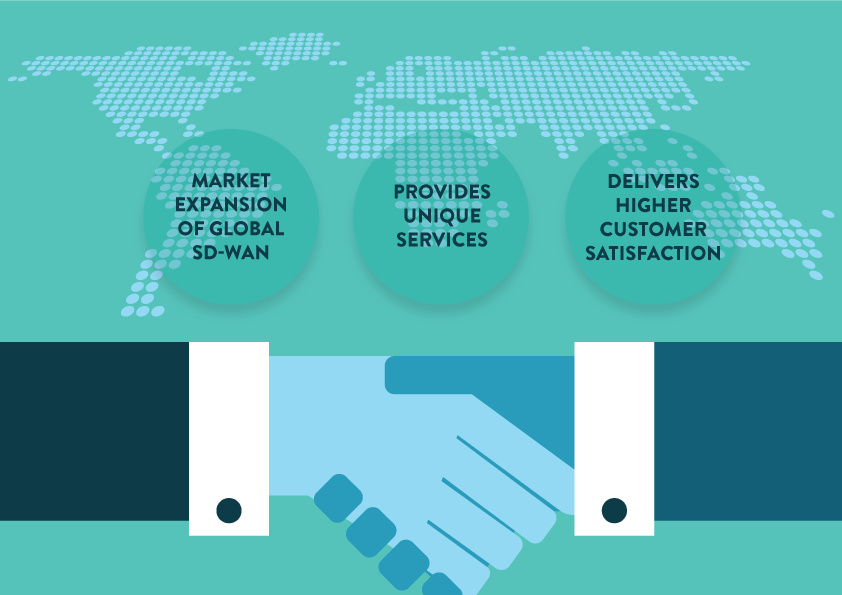Why the Internet still fails most businesses
Enterprise-class services like WAN Optimization and CDNs have widened the divide between large enterprises and small business, but there’s one technology that promises to change that.
We’ve all read a forest’s worth of stories on how the Internet is changing business. Because of the Internet, we can interact with people an ocean away as easy as talking to a neighbor. We can buy and sell in a truly global market, and a trend that starts in a tiny backwater can explode almost overnight to captivate the entire connected world.
Yet, for all of its power, the Internet is better for some businesses than others. Let me ask you three quick questions about your business to illustrate this point.
Does your business:
- Have more than one location?
- (If you have more than one), are all of your offices confined to one region, or are they geographically dispersed (that is with at least one office more than 500 miles away from the nearest sister office)?
- Rely on a single ISP for your business-grade Internet links?
If you answered “no” to all of the questions above, the Internet is probably serving your business just fine. With only a single location or with multiple locations within a confined region, being close to other workers you may need to collaborate with, lets you sidestep many, many problems. For instance, you won’t be plagued by the long-haul Internet traffic problems large enterprises have to deal with as they serve workers in far-flung branch offices.
And of those large enterprises serving a dispersed workforce, if you have multiple ISPs to choose from, you can choose the highest-performing links to ensure that your workers get access to the resources you need.
However, if you answered “yes” to any of these, the Internet isn’t the competitive advantage you may believe it to be. In fact, it could be holding you back versus your competitors.
During my time with Aryaka, I’ve worked with a variety of enterprises, from small ones with a single headquarters and one branch office to globally dispersed enterprises with 150 distinct offices or more. These companies have revenues anywhere from $5M to $95B, and have served branch workers in the U.S., China, Brazil, South Africa, India, Japan and 50 other countries across 300 cities.
My point here isn’t to give you my CV, but to point out that working for Aryaka means working with business of all shapes and sizes, and during my time working with those businesses, I’ve learned over and over again about how the public Internet fails business.
There’s very little that is consistent across these varied businesses, other than one thing: when I first meet with them, none of them are happy with how the Internet serves their businesses.
Here are a three of the most common reasons for this discontent:
- Globalization. While companies of any size can now go global on the cheap, that’s not always a good thing. Plenty of small startups have executive teams in the U.S. or U.K. but build out development teams in Vietnam or India. Or manufacturing may be set up in China while the corporate vision takes shape in the Silicon Valley.Once a company chooses to be global, however, it commits to an investment in communications technology and networks to facilitate collaboration among distant teams.Then, the Internet starts to fail them. At first glance, Internet links appear to be affordable, but those same links, unaided, will fail more often than not across long distances and through multiple Internet peering points, not only for time-sensitive applications like voice and video, but even for less media-rich tasks as data analytics.
- M&A headaches. According to the Financial Times, M&A activity for the first three quarters of 2014 eclipsed any similar period from the past five years. We’re in an age of the business buying spree.We’re also in an age of aggressive tax avoidance with plenty of companies opting for corporate inversions that move their headquarters to the tax havens of a just-acquired company (although regulatory changes appear to be cooling this trend off).As companies move to new locations, or try to integrate the new offices gained through M&As, traditional networks like MPLS fail to meet their needs. MPLS and similar networking technologies are not agile enough to support such decisions on the fly and require months or years or planning.
- Cloud confusion. Just 5 years ago when Aryaka was founded, the word “cloud” made IT uneasy with concerns like security and management. Now, the cloud is central to various strategies – from marketing to data analytics – for pretty much every progressive IT organization. Yet most businesses still have very vague cloud strategies in place.Some business teams commit to a complete transformation while others drag their feet waiting for more concrete ROI numbers.Moreover, production-level deployments of cloud services for a distributed organization lead to the realization that enterprise cloud services are typically a single instance supported with backups, leading to such problems as syncing and keeping data up to date in real time.And we know of another major challenge faced by distributed end users dealing with centralized data (you probably already guessed this one): application performance, which is terrible.
The traditional tool enterprises have used to overcome the distance problems of the Internet is MPLS. While it’s an older technology, MPLS providers worldwide still serve a $25B market, which, believe it or not, is still growing. These service providers have the reputation of being uniquely able to provide a reliable network and job security for the IT decision maker not willing to look at change as necessary.
MPLS is a safe bet, but is it effective? If you have a stable, geographically confined enterprise, it’s probably fine. If your organization prepares for and even embraces change, MPLS won’t serve you well. It’s too expensive, requires too much equipment, and if anything changes, such as adding a new location overseas, it’s too slow. It could take months to get that new office online.
At the other extreme, the Internet alone is NOT a good medium for doing business across long distances, especially if you expect your teams to collaborate. And that’s unlikely to change as long as the Internet is made up of multiple service providers moving packets across congested peering points and looking to get their traffic off their networks as fast as possible.
Fortunately, there is a middle way, the Aryaka way. Aryaka was built on the idea of democratizing the Internet. Expensive, hardware-heavy solutions that used to give large enterprises with deep pockets a serious advantage over smaller businesses – technologies such as WAN optimization and CDNs – have been transformed into cloud services that can be consumed on an as-needed basis by businesses of all sizes.
Solutions like Aryaka bring together the best of both worlds. With Aryaka, IT is able to acquire one or more large and affordable Internet links for access to local cloud services, while also providing for a link to Aryaka’s global, private, optimized and secure network. The Aryaka global network includes built-in redundancy, security, QoS and the ability to full mesh, as well as providing seamless access to distant cloud services. For TCP-based applications, it gives IT the ability to improve performance through the optimization stack, so applications behave optimally across long distances, thus improving productivity and encouraging collaboration.
These days, if you feel like the big players are beating you up because they have better Internet resources, you should take another look. The cloud is democratizing business-class networking tools, making them affordable for even small businesses. If you haven’t figured out how to boost the performance of your dispersed workforce, now is the time. If you wait much longer, you may never catch up.
– Sonal







